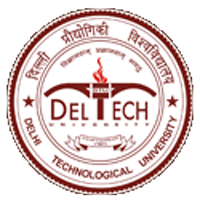Please use this identifier to cite or link to this item:
http://dspace.dtu.ac.in:8080/jspui/handle/repository/22259Full metadata record
| DC Field | Value | Language |
|---|---|---|
| dc.contributor.author | ARORA, SUNNY | - |
| dc.date.accessioned | 2025-11-07T05:42:34Z | - |
| dc.date.available | 2025-11-07T05:42:34Z | - |
| dc.date.issued | 2025-06 | - |
| dc.identifier.uri | http://dspace.dtu.ac.in:8080/jspui/handle/repository/22259 | - |
| dc.description.abstract | The development of Continuous Glucose Monitoring (CGM) sensors, such as Medtronic Enlite, has transformed diabetes care by providing real-time CGM data every 5 minutes. This time series (TS) CGM data serves as a foundation for building data-driven blood glucose prediction (BGLP) models. Such models provide individuals with early alerts about potential glycemic fluctuations, enabling prompt interventions to prevent hyperglycemia or hypoglycemia, thereby enhancing glucose regulation and minimizing micro vascular complications. BGLP models utilize CGM data to forecast future blood sugar levels by analyzing historical CGM trends and patterns, helping users make informed decisions about insulin administration. Such advancements have led to the development of automated insulin delivery technologies, often referred to as artificial pancreas (AP) systems. In AP systems, control algorithms such as Model Predictive Control leverage precise glucose predictions to proactively adjust the insulin infusion rates, closely replicating the natural pancreatic activity. Thus, the development of an ideal AP has raised interest in enhancing prediction accuracy through the data-driven computational modeling methods such as Deep learning (DL). Blood glucose prediction is advanced in this research through a systematic literature review of existing Machine learning (ML) based BGLP models, identifying gaps in them and the proposal of novel frameworks to enhance prediction accuracy. However, the existing research presents various modeling techniques for short-term BGLP, generally grouped into three broad types: physiological models, data-driven approaches, and hybrid strategies. Mathematical representations of human glucose-insulin dynamics forms the basis for physiological models. While they provide interpretable insights, they often require extensive domain knowledge and may struggle to generalize across individuals due to the high variability in physiological responses. Hybrid models use physiological knowledge with data-driven methods, offering a balance between interpretability and adaptability. However, they can be computationally expensive and may still face challenges in capturing complex and nonlinear patterns in glucose dynamics. In contrast, data-driven models, particularly those based on DL, excel at automatically learning patterns from TS data without requiring explicit domain knowledge. These models are highly adaptable and can capture complex temporal dependencies and nonlinear relationships in CGM TS v data, making them particularly suitable for personalized glucose prediction. On the other hand, traditional ML-based models often struggle with extracting meaningful features and capturing complex temporal dependencies, requiring labor-intensive feature engineering to achieve comparable performance. Building on the strengths of data-driven methodologies, two novel frameworks for short- term BGLP were designed and implemented in this research. First, a hybrid architecture, referred to as the Convolutional Recurrent Connection (CRC) Model, integrating a 1D convolutional layer (Conv1D) with a Long Short-Term Memory (LSTM) network is proposed for BG prediction in Type 1 Diabetes affected patients. The Conv1D layer extracts deep hierarchical features from CGM data, capturing local patterns and relationships between adjacent data points, while the LSTM layer models complex temporal dependencies, including those between non-consecutive time steps. This two- stage feature extraction strategy allows the model to effectively capture both immediate and long-term glucose dynamics, enhancing prediction accuracy over a 60 min prediction horizon—addressing a key challenge in BGLP modeling. Unlike previous methods that often focus on either short-term patterns or long-term trends, the architecture presented in the first proposed model of this research provides a comprehensive analysis of glucose variations. Second, an Optimal Attention-based Long Short-Term Memory (OALSTM- BGLP) model that combines an attention mechanism with LSTM for BGLP is introduced. The attention mechanism can prioritize critical segments of the CGM input sequence, enhancing its capacity to capture long-range dependencies and context-specific details while addressing the vanishing gradient problem. Models performance has been assessed using standard evaluation metrics including Root Mean Square Error (RMSE), Mean Squared Error (MSE), Mean Absolute Relative Difference (MARD), Mean Absolute Error (MAE), and Mean Absolute Percentage Error (MAPE). The proposed research not only improve the efficacy of short-term BGLP, but also aid in shaping personalized diabetes care systems by facilitating prompt interventions, optimizing glycemic control, and minimizing complications risks. | en_US |
| dc.language.iso | en | en_US |
| dc.relation.ispartofseries | TD-8238; | - |
| dc.subject | DATA-DRIVEN MODEL | en_US |
| dc.subject | BLOOD GLUCOSE DYNAMICS | en_US |
| dc.subject | CONTINUOUS GLUCOSE MONITORING (CGM) | en_US |
| dc.subject | PREDICTION | en_US |
| dc.subject | BGLP | en_US |
| dc.title | DEVELOPMENT OF AN EFFICIENT DATA-DRIVEN MODEL FOR PREDICTING BLOOD GLUCOSE DYNAMICS | en_US |
| dc.type | Thesis | en_US |
| Appears in Collections: | Ph.D. Computer Engineering | |
Files in This Item:
| File | Description | Size | Format | |
|---|---|---|---|---|
| Sunny Arora pH.d..pdf | 5.68 MB | Adobe PDF | View/Open |
Items in DSpace are protected by copyright, with all rights reserved, unless otherwise indicated.



